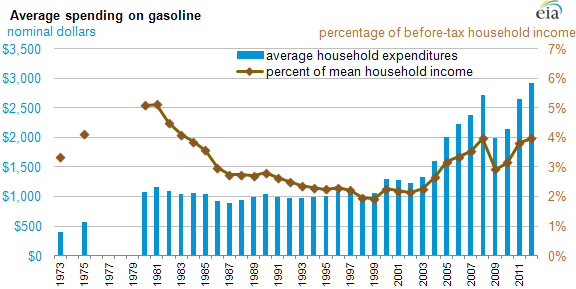Even as the Keystone XL pipeline languishes in the regulatory limbo of the Obama administration, as many as 37 other pipeline projects are nearing completion or are under way.
The burst of pipeline activity is in response to new U.S. and Canadian oil production which shifts demand and supply centers and requires additional investments in oil and gas transportation. Even as more and more crude oil is being transported by rail and truck, pipelines remain the safest and lest expensive way to transport petroleum products. Many of the projects are known as “reversals” where existing pipelines reverse their flow, and change the product they carry. The Longhorn Pipeline reversed from carrying refined products from Houston to El Paso, to carrying cruse oil from the Eagle Ford region of south Texas to refineries in the Houston area.
A few other pipelines projects under way include:
PROJECT: West Texas crude system
OPERATOR: Sunoco Logistics Partners LP
ORIGIN/DESTINATION: Three different projects to bring Permian basin crude to Gulf Coast market. West Texas to Houston line – 40,000 bpd, expandable to 44,000 bpd, will carry West Texas Sour and West Texas Intermediate at Midland; West Texas to Longview Access – 30,000 bpd, to carry Permian crudes to the Mid-Valley pipeline to the Midwest; West Texas to Nederland Access – 40,000 bpd
STARTUP: West Texas to Houston operational; West Texas to Longview to start up at the end of May 2013; West Texas to Nederland delayed by Exxon Mobil Corp’s shutdown of its Pegasus crude oil pipeline that carries heavy Canadian crude to Texas from Illinois. The Sunoco line is connected to the Exxon line, which shut in late March when it spilled 5,000 barrels into an Arkansas housing subdivision. Sunoco is awaiting word from Exxon on restart.
PROJECT: Permian Express, Phase I
OPERATOR: Sunoco Logistics Partners LP
ORIGIN/DESTINATION: Wichita Falls, Texas to Nederland, Texas
CAPACITY: Initial capacity will be 90,000 bpd, expected to reach 150,000 bpd. Phase II 200,000 bpd, under development, would go from Colorado City, Texas, to Nederland and further east to St. James, Louisiana and Louisiana refineries.
STARTUP: Initial 90,000 bpd in June 2013, up to 150,000 bpd in late 2013 or early 2014.
PROJECT: Eagle Ford Pipeline
OPERATOR: Plains All American
ORIGIN/DESTINATION: 140-mile crude line and condensate from Eagle Ford production in Gardendale, Texas, to refineries in Three Rivers and Corpus Christi; and a new 35-mile segment from Three Rivers to Enterprise Products Partners’ Lyssy station in Wilson County.
CAPACITY: Targeted 350,000 bpd take-away from western Eagle Ford to Three Rivers/Corpus Christi, plus a marine terminal facility at Corpus Christi and 1.8 million barrels of operational storage capacity across the system.
STARTUP: 140-mile pipeline operational; Corpus Christi dock in service in June 2013; and Lyssy line in service in August 2013.
PROJECT: Gardendale Gathering System expansion
OPERATOR: Plains All American
ORIGIN/DESTINATION: Four crude oil gathering pipelines, a total of 90 miles in length, extending from Dimmitt and La Salle counties to Plains’ Gardendale Terminal in South Texas. Will connect at Gardendale to long-haul pipelines that deliver crude to refineries in Three Rivers, Corpus Christi and the Houston area. Project includes construction of new Eagle Ford condensate stabilization facility adjacent to Gardendale terminal. Also a new 40-mile Gulf Coast crude oil pipeline originating from Plains’ Ten Mile terminal in Mobile, Alabama.
CAPACITY: 115,000 bpd of incremental gathering capacity; condensate facility 80,000 bpd.
COST: US$190-million for all three projects
STARTUP: Gardendale expansion completed in stages from autumn 2012 through the first half of 2013; 40,000 bpd of condensate facility started end 2012, second half in first quarter 2013; 40-mile Gulf Coast line to Alabama in service fourth quarter 2013.
PROJECT: Permian Basin Expansion Projects
OPERATOR: Plains All American
ORIGIN/DESTINATION: Various links extending, expanding crude oil lines in Permian Basin, West Texas.
CAPACITY: 145 miles of expansions of existing system to add total of 150,000 bpd in capacity in Texas, plus projects in southeast New Mexico
COST: US$250-million
START-UP: Late 2012 through 2013
PROJECT: Houma-to-Houston pipeline reversal
OPERATOR: Shell Pipeline LP
ORIGIN/DESTINATION: Houma, Louisiana, to Houston, Texas; reversal will run from Houston to Houma. Initial phase to allow deliveries of crude from connecting pipelines and terminals in Houston to Nederland and Port Arthur started up in January 2013; second phase extending reversal to move crude from Texas to Louisiana to be operational by the end of 2013. Phase Three expansion, adding additional pumping capability to push the line to its 250,000 bpd capacity, to be done by early 2014.
CAPACITY: 250,000 bpd
COST: US$100-million
STARTUP: First phase operational; Phase Two end 2013; Phase Three 2014.
The Financial Post has the complete story.















